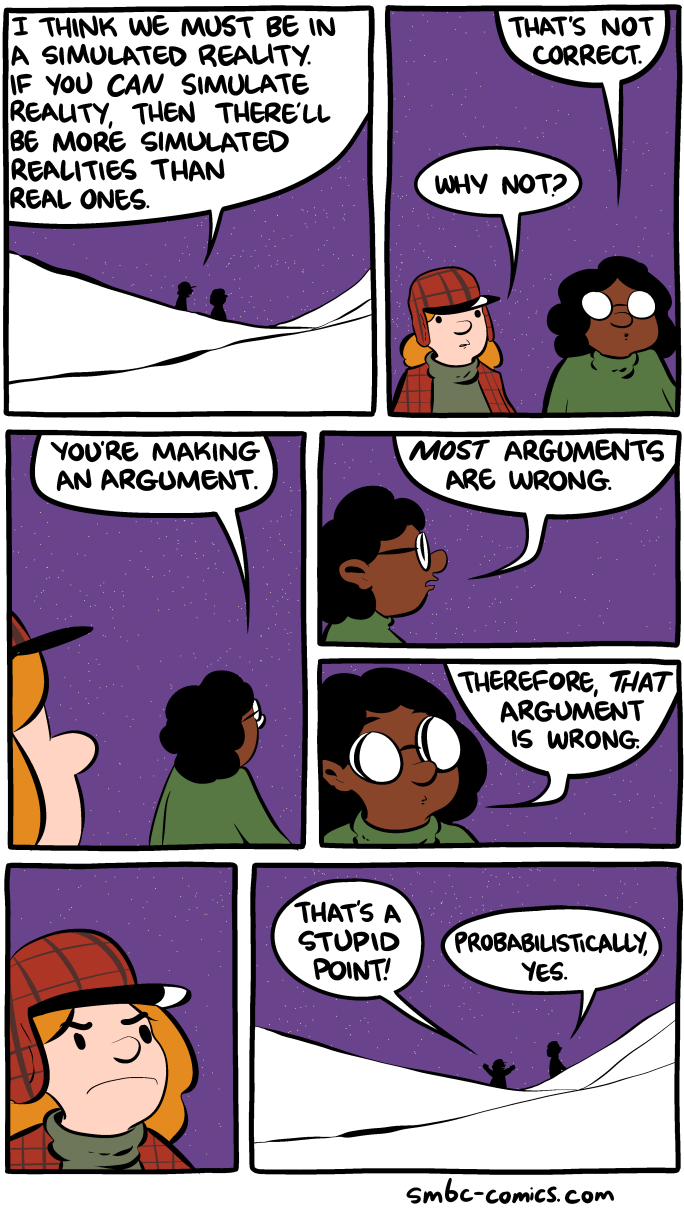There are a few comments online about
Her that are fully on the mark about the content of the movie, yet miss the main goals I think Jonze was striving for. That people think enough about any work of fiction to be annoyed by it is usually a compliment. What
Robin Hanson said was
The main character of Her pays a small amount to acquire an AI that is far more powerful than most human minds. And then he uses this AI mainly to chat with. He doesn’t have it do his job for him. He and all his friends continue to be well paid to do their jobs, which aren’t taken over by AIs...Soon after they all leave together for a place that ”it would be too hard to explain” where it is. This is somewhat like a story of a world where kids can buy nukes for $1 each at drug stores, and then a few kids use nukes to dig a fun cave to explore, after which all the world’s nukes are accidentally misplaced, end of story.
Yes, when you think about AI for a living, you can't help but notice these kinds of incongruities. For that matter I'm a casual fan of Roman history, and I still get annoyed when I see tailored clothing in Roman-period movies. Along these lines, for me the silliest thing in
Her in terms of predicting the future might be the China-India merger news near the beginning of the movie. But if you can get past the window-dressing to remind you it's the future so the creator has some license to alter the setting to make his point, then you can also realize
Her isn't about geopolitics and economics. The technology Jonze creates is only a means for him to focus on his main themes. First, even though
Her is set in a science fiction near-future LA, it's a better depiction of LA than in most movies. For example: LA is on the coast, and it often has really nice clouds. (If you live or travel there, pay attention. It's not the vanilla neutral people-terrarium portrayed on our screens.) A simple touch like this, letting LA speak for itself, warms the heart and makes the city in the movie feel more similar to the world outside the theater. In fact, the movie almost made me homesick for Southern California, while I was living in Southern California! And another thing about LA: there is a natural world that the city hasn't obliterated. There are mountains. There are islands. There are things to do outside. There are restaurants very much like the ones the people in the movie go to. And speaking of restaurants, the differing ratio of white:non-white you can see among the characters' friends, as opposed to waitstaff, felt accurate too. (People in California don't like to talk about this discrepancy.)
But more importantly,
Her is about how the nature of
intimacy has changed in the modern age, with the gain turned up a little on the role of technology to help focus on this. There is the obvious point being made that the protagonist's job is to write heartfelt cards for
others' intimates, and in so doing, interpose himself (by invitation, for commercial reasons) in the most tender moments between lovers and family members. Yet he himself spends most of his life alone in a dark apartment, his only close friends from back in college. There's always clearly a connection missing - made all the more obvious by the people around him during his commute - always physically alone - constantly talking to friends on their earpieces. His material comforts (which are many - witness the great view and the cool video game system) don't make up for his lack of connection. In all the material and surface aspects, this guy has a great life - even with that dumb mustache he manages to get a date with Olivia Wilde, which seems to go well, and then he whiffs. And finally, the most aggressive and uncomfortable experiment in intimacy is the "real" woman standing in for the virtual Samantha, yet another intimacy intermediary. I found this scene not at all salacious and indeed only slightly less uncomfortable than the threesome in the film version of
The Handmaid's Tale. (Seriously, don't look it up.)


